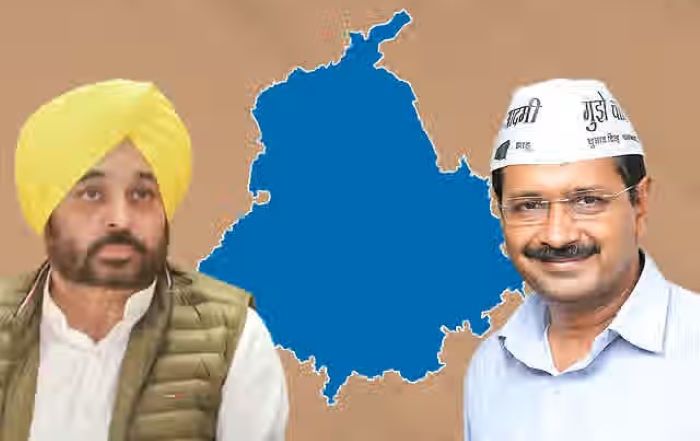
Kothi No. 50 in Sector 2, Chandigarh, has quietly become one of the most talked-about addresses in Punjab’s political landscape — not because of any constitutional office held by its occupant, but because of the power, access, and influence that seem to radiate from within its walls. This residence, situated in one of Chandigarh’s oldest and most prestigious sectors, stands as a telling symbol of how authority can exist outside the boundaries of official titles.
Sector 2, along with the neighbouring sectors 1 to 4, was designed to house senior bureaucrats and political figures during Chandigarh’s formative years. These tree-lined avenues, just minutes from the Punjab and Haryana Secretariat, have historically hosted Chief Ministers, ministers, and high-ranking officers. Yet Kothi No. 50, though officially just another private residence, has often been at the centre of political and administrative interest.
Over the years, the address has been mentioned in various media and vigilance reports, particularly during periods when the activities of certain influential families came under public scrutiny. In early 2000s records, “Kothi No. 50, Sector 2” appeared in vigilance references as a residence connected to one of Punjab’s most powerful political families. While some reports concluded that nothing objectionable was found during searches, the very fact that a non-constitutional figure commanded such an aura of control and importance sparked debates on the nature of “unofficial power” in Punjab’s political system.
A House That Reflects Invisible Authority
The significance of Kothi No. 50 lies not merely in its physical grandeur but in what it represents — the enduring ability of certain individuals to shape governance, policy, and administration without occupying any formal post. It is a mirror to the blurred lines between personal networks and public power. Even without holding office, the occupant is widely believed to wield political influence, capable of summoning bureaucrats, managing electoral affairs, and guiding key decisions.
This phenomenon underscores an uncomfortable truth about Punjab’s governance culture: power does not always flow through elected or constitutional channels. Instead, informal centers of control — often located in private residences like Kothi No. 50 — can override official hierarchies. This pattern, while familiar across India, has in Punjab taken on a visible and controversial character.
Property Transparency and Legal Scrutiny
From a governance standpoint, the case of Kothi No. 50 raises questions about transparency and accountability. Public researchers and watchdog groups have long advocated for complete disclosure of properties used for political or quasi-official functions. Chandigarh’s strict urban planning laws and Supreme Court restrictions on structural conversions make it possible to trace ownership through the Sub-Registrar’s records, property tax filings, and sanctioned building plans.
A deep investigation into the property begins with a paper trail — ownership documents, municipal permissions, and historical registry files. These can be obtained under the Right to Information (RTI) Act from the Sub-Registrar’s office and the UT Administration. Vigilance Bureau files from the early 2000s, which mention the address, can also be accessed through formal RTI applications or court archives. A researcher can then compare those records with the electoral and business disclosures of the individuals connected to the residence.
The Ethics of Influence
While the individual associated with Kothi No. 50 holds no constitutional position in Punjab, his continuing visibility in political decision-making demonstrates the persistence of informal governance. This situation raises broader ethical questions: How far should unelected figures influence state policy? Should political parties openly acknowledge and regulate the advisory roles of such figures? And most importantly, how can citizens ensure that governance remains within accountable, constitutional boundaries?
Suggested Steps for Researchers and Journalists
For anyone investigating the symbolic and political weight of Kothi No. 50, a credible inquiry should rely on verifiable documentation, not speculation. Recommended steps include:
Obtain Certified Ownership Documents – from the Sub-Registrar, Chandigarh, to verify who holds title and since when.
File RTI Applications – seeking copies of any vigilance or enforcement records mentioning the address.
Check Municipal and Housing Board Records – for permissions, building modifications, and tax filings.
Search Court Records – in Chandigarh District Court and Punjab & Haryana High Court for any litigation connected to the property or its owners.
Cross-reference Media Reports – from archives of The Tribune, Hindustan Times, and regional portals for timeline consistency.
Interview Local Stakeholders – including neighborhood residents, journalists, and retired officials who may have interacted with the household during its politically active phases.
Conclusion
Kothi No. 50, Sector 2, Chandigarh, is more than a postal address — it is a case study in the continuing interplay between formal governance and informal power. It highlights how influence can thrive without office, how legacy networks can shape decisions behind closed doors, and how Chandigarh’s elite residential spaces often double as political nerve centers. A transparent and fact-based exploration of such spaces is not about targeting individuals but about strengthening democratic accountability in Punjab and beyond.